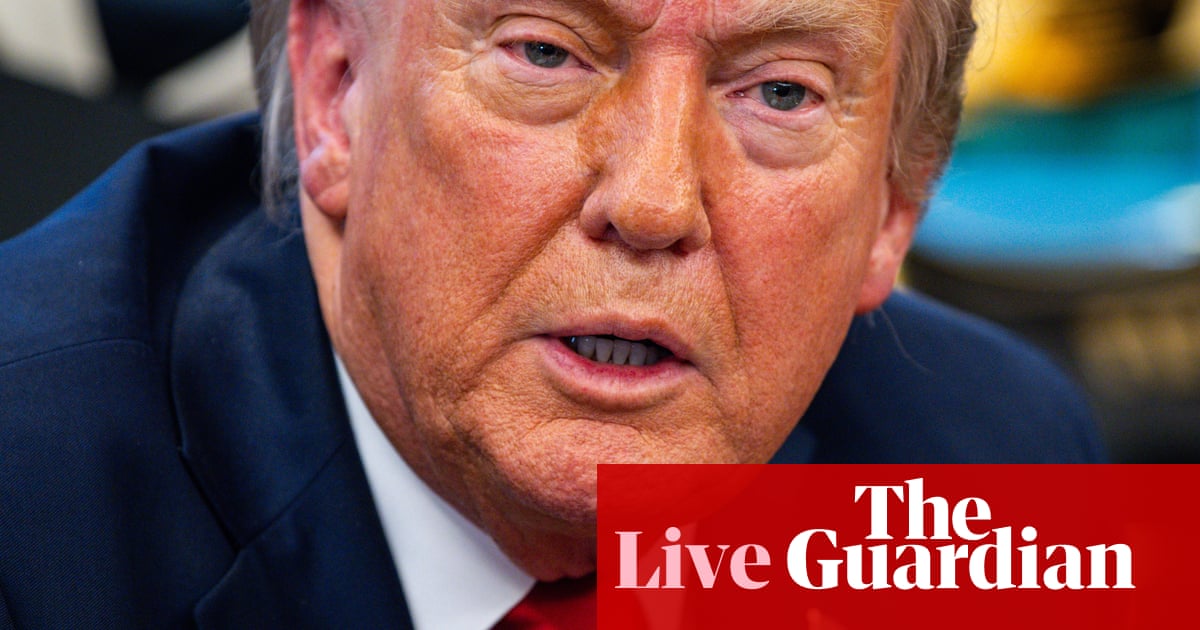Donald Trump again caused economic uncertainty as he declared that his administration would reimpose tariffs it paused on 9 April within “the next two, three weeks” where countries had not struck a deal with the US.
Speaking at the White House, the US president said “In the end, I think what’s going to happen is, we’re going to have a great deals, and by the way, if we don’t have a deal with a company or a country, we’re going to set the tariff. I’d say over the next couple of weeks, wouldn’t you say? I think so. Over the next two, three weeks.”
On 9 April Trump had “paused” the majority of tariffs he had set sweepingly on nearly every international US trade partner. His most recent pronouncement leaves importers and exporters unclear whether by the end of the next month they will be paying Trump’s new baseline 10% tariff, the tariff that was set on 9 April, or an entirely new figure.
So far, several key parts of the global economic have resisted the pressure from theTrump administrationto, as JD Vance put it while speaking in India earlier this week, “rebalance” international trade.
The European Union has said it has no intentions of changing its rules on value added tax – a tax imposed on specific goods at the point of sale in EU countries – or on agricultural subsidies. China has shown no sign of bucking under the Trump decision to attempt to impose a 145% tariff on most goods originating there.
On Wednesday a Chinese official said the US “should stop threatening and blackmailing China, and seek dialogue based on equality, respect and mutual benefit. To keep asking for a deal while exerting extreme pressure is not the right way to deal with China and simply will not work.”
Minnesota governorTim Walzhas accused US presidentDonald Trumpof throwing the US economy into turmoil, and vowed to try to protect people in the state from the worst of the consequences.
Delivering his annual state of the state speech, Associated Press reports that the man who had hoped to be vice-president in a Kamala Harris administration said:
Reuters reports that, in its regular daily briefing, China’s foreign ministry spokesperson has said China and the US have not held consultations or negotiations on tariffs.
US Treasury secretaryScott Bessentsaid on Wednesday it could take between two and three years to restore normal trade with China, following reports that on Tuesday he told a private investment conference that a trade war with China was “unsustainable”.
Bessent has been credited in some quarters with forcingDonald Trumpto backtrack in the face of market reaction. Inan analysis piecefor the Wall Street Journal overnight, Meridith McGraw and Brian Schwartz wrote that “so far, the only force that has reliably prompted [Trump] to back down is Wall Street. They said:
Donald Trump again caused economic uncertainty as he declared that his administration would reimpose tariffs it paused on 9 April within “the next two, three weeks” where countries had not struck a deal with the US.
Speaking at the White House, the US president said “In the end, I think what’s going to happen is, we’re going to have a great deals, and by the way, if we don’t have a deal with a company or a country, we’re going to set the tariff. I’d say over the next couple of weeks, wouldn’t you say? I think so. Over the next two, three weeks.”
On 9 April Trump had “paused” the majority of tariffs he had set sweepingly on nearly every international US trade partner. His most recent pronouncement leaves importers and exporters unclear whether by the end of the next month they will be paying Trump’s new baseline 10% tariff, the tariff that was set on 9 April, or an entirely new figure.
So far, several key parts of the global economic have resisted the pressure from theTrump administrationto, as JD Vance put it while speaking in India earlier this week, “rebalance” international trade.
The European Union has said it has no intentions of changing its rules on value added tax – a tax imposed on specific goods at the point of sale in EU countries – or on agricultural subsidies. China has shown no sign of bucking under the Trump decision to attempt to impose a 145% tariff on most goods originating there.
On Wednesday a Chinese official said the US “should stop threatening and blackmailing China, and seek dialogue based on equality, respect and mutual benefit. To keep asking for a deal while exerting extreme pressure is not the right way to deal with China and simply will not work.”
Welcome to the Guardian’s ongoing rolling coverage of US politics and the second DonaldTrump administration. Here are the headlines …
Trump again spooked businesses with his yo-yoing tariff plans, saying at the White House that “if we don’t have a deal with a company or a country, we’re going to set the tariff … over the next two, three weeks”
A dozen US states havesued the Trump administrationin the US court of international trade in New York on Wednesday to stop its tariff policy, saying it is unlawful and has brought chaos to the American economy
Trumpsigned executive orders on Wednesday targeting universitiesas his administration seeks to reshape higher-education institutions and continues to crack down on diversity and inclusion efforts
Trump once again attacked Volodymyr Zelenskyy for refusing to agree to peace terms that Ukraine says amount to a surrender to Russia. Trump said Zelenskyy’s stance, refusing to permanently concede Crimea to its nuclear-armed neighbour Russia, who had invaded it in 2014, was “very harmful to the peace negotiations”
